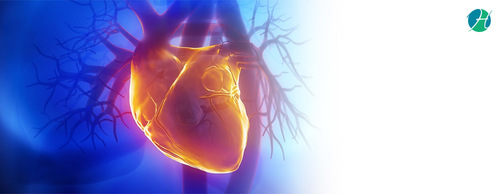The Necessity of Defibrillators in Public Spaces

Cardiac arrests can happen anytime, and when you least expect them to. Even when you think you’re healthy, you can still be a good candidate for a cardiac arrest. When this happens, your heart stops pumping suddenly and unexpectedly. You can collapse and lose consciousness. For some, the effect is a minor stroke, while others could, unfortunately, also die.
Cardiac arrests happen because of a disruption in the heart’s electrical system malfunctions, which renders the heart unable to pump blood. When this happens, the presence of a medical device known as an Automated External Defibrillator (AED) can spell the difference between life and death.
Out of more than 356,000 cardiac arrests occurring annually outside of hospitals in the United States, 90% of cases are fatal, demonstrating that emergency response is a nationwide issue in need of a solution. Anyone can experience heart issues at any time, but access to a defibrillator and proper training may be able to significantly reduce the number of fatalities.
This article gives you the details on what an AED is, and why it’s important in public places.
The Importance of AEDs
An Automatic External Defibrillator, or AED, is a portable device that can analyze the heart’s rhythm and deliver a shock (also known as defibrillation) to help the heart regain a regular rhythm when necessary. In short, it is a lifesaving device that can help those experiencing cardiac arrest – a sudden complication of the heart that often results in death before the patient even reaches a hospital. While paramedics try their best to reach patients as soon as possible, a bystander may need to intervene to provide life-saving measures: it is therefore essential that a defibrillator is available.
A lifesaving Awareness
Unfortunately, not many are aware of the importance that an AED may hold, where they may be located, or even how to use one. In fact, a shocking half of all US employees don’t know where the AED is located in their workplace. While the AED is a complex device that delivers life-saving treatment, it’s designed so that it’s easy to use by those who aren’t a doctor or paramedic. However, despite its ease of use, it’s still important to be aware of how to use an AED – which is why, like CPR, there are classes (online and in-person) available.
All public places like schools, airports and workplaces in all industries should buy AEDs, as they can often mean the difference between life and death. However, it’s necessary to spread the awareness of where the AED is located in case of an emergency – such as through informative signs or letting others know in a workplace meeting. Implementing an AED training course in the workplace is also an essential in order to spread knowledge and awareness. With the proper awareness in place, the benefits of an AED are undoubtedly increased by giving confidence to those who may witness a cardiac arrest.
For instance, the basic steps of using an AED include:
- Turn on the machine, as the switch is apparent on a large and unmistakable button.
- Attach the pads on the victim’s chest. One pad must be stuck to the upper part of the person’s right chest, while the other on the left side, near the armpit and below the nipple. Always attach on bare skin.
- Wait while the machine analyzes the heart rhythm. The machine dictates what to do next, such as delivering the shock through the rescue or shock button.
Apart from the easy steps above, AEDs are also portable and lightweight, making them all the more accessible for use.
The Benefits of an AED
While the AED is especially useful in highly populated settings, the benefits it can bring to the wider population are quite profound. Early defibrillation is the number one treatment for sudden cardiac arrest and using it as soon as possible increases the odds of survival by 90%. With their easy to use design, AEDs are also portable and lightweight – not to mention battery operated. And, since modern AEDs also analyzes the heart’s rhythm, they won’t allow a shock to be delivered when a healthy heartbeat is present, making them safe to use if a bystander has misunderstood the symptoms presented.
The event of a cardiac arrest can be a life-threatening and sudden situation and can happen anytime, anywhere and to anyone. Because of this, it’s a necessity to have AEDs in public settings and spread awareness, as they can ensure the safety of the greater population.
Final Word
All these considered, AEDs are the best hope for people who collapse or faint when their heart enters into a deadly state of cardiac arrest. For people who suffer from this plight, the presence of this device is often their best defense against potential death. Because of the importance it brings, the necessity of AEDs are now all the more emphasized particularly in high-traffic areas such as public spaces, airports, malls, and office buildings. Thankfully, these devices are also easy to use. Now that you’ve read through this, the next best thing you can do is learn more about how it looks like and how to use it. That way, should an emergency happen, you’ll know how to save others.

